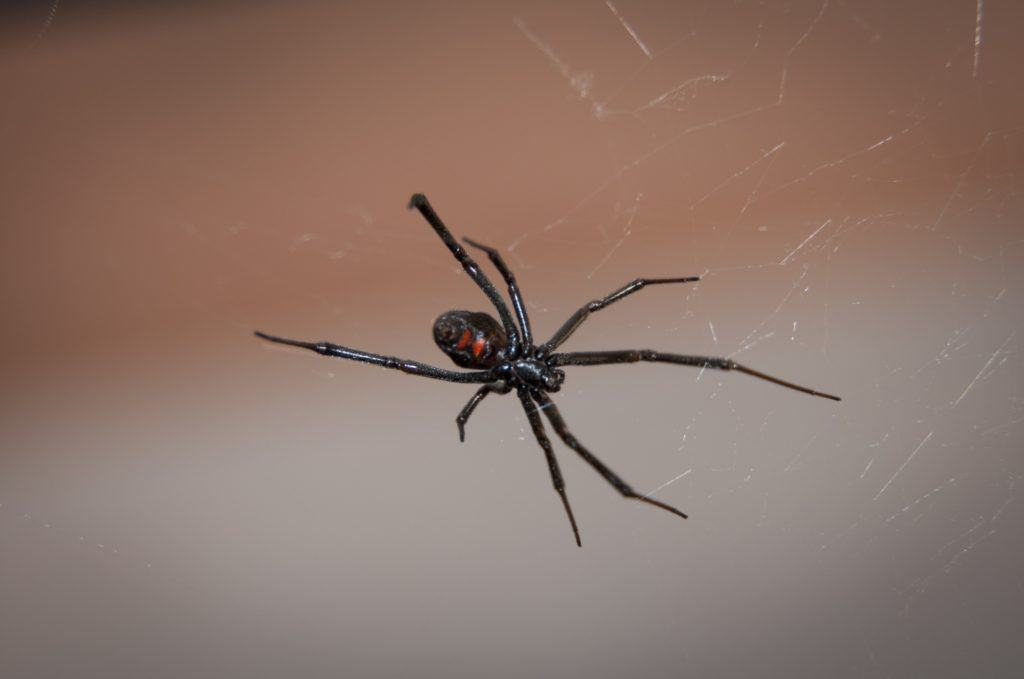Danger Lurks in the Tall Grass

As if COVID-19 wasn’t enough.
The shiny black devils made their reappearance during the first nice day last week. My wife was puttering near the overgrown border of our goldfish pond out front. The local water birds and neighborhood cats had finally emptied the small basin’s contents of all the koi, goldfish and the few frogs that had persevered over the last few years, so we were thinking of draining and cleaning it this spring and starting over fresh.
“The black widows are back,” was all she said as she passed by me working on my boat engine. I murmured a few choice expletives and went to look for the chemical spray I had been using over the years to eliminate the nasty critters. Then she added, “I looked under the toad house and there they were. One big female, the size of a marble with its red hourglass insignia plus a small boyfriend.”
Our home’s landscape suffers from a general gardening policy of laissez faire. But our birds like it, the squirrels love it and our young Labrador continues to delight in tearing about, throwing divots in his wake. It’s not the garden of a catalog cover.
Unfortunately, sometimes one or two black widows hang about on the fringes of the lawn, taking advantage of the cover of the heavier growths of weeds that we ignore or the remnants of my spouse’s attempts to grow any of the leafier ornamentals. They also, occasionally and alarmingly, will lounge in their fresh webs among the kayaks, canoes or crab cooking implements that are constantly strewn about.
That occasional presence has definitely ensured that our family remains alert to their dangers. We wear gloves and long sleeves for any gardening and look carefully before grabbing anything that’s been undisturbed for a week or two.
There is allegedly little chance of an adult succumbing to its virulently toxic bite but the black widow is one of the more dangerous arachnids that flourish in Maryland. While most spiders are beneficial in controlling the populations of bugs and other small critters that also thrive in our fertile climate, the southern black widow is not a popular species.
Long ago, while researching the impact of its bite, the one consistent recommendation I found was that the victim immediately seek medical help. The venom is a neurotoxin which always has the potential to be dangerous since it attacks the central nervous system. Though the small amount of the substance usually secreted in the widow’s bite is not enough to be fatal, it can be serious if one is particularly sensitive to it. No one is immune.
It takes about 30 minutes before the symptoms begin to show–involuntary muscle spasms and confusion. You’ll want someone else to drive you to the ER. The site of the bite will turn reddish and begin to swell slightly. Then it begins to hurt, often excruciatingly, which is when medical assistance becomes necessary. Treatment is usually anesthetics and in severe cases, antivenin.
I returned to the pond and the upturned toad house and dispatched the two culprits. The springtime chill had rendered them torpid but I felt no twinge of remorse in their passing. There wasn’t evidence of an egg sack nearby and, though the presence of the small male indicated that a mating scenario was in progress, I would not have to concern myself with the 200 or so spiderlings that can issue from such an event. Good to know.
Fishfinder
Fishfinder is suspended until the current medical crisis is past and our governor feels it is safe to venture out. The COVID-19 pandemic has rendered the springtime bite problematic; I cannot in good conscience urge anyone to expose themselves during this ultra-contagious event.
Do not take chances, after all it’s not just you, it’s everyone with whom you’ll eventually contact. I hope the worst is over by rockfish season, May 1.
